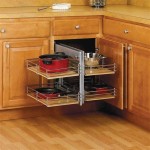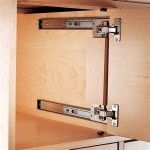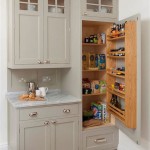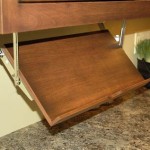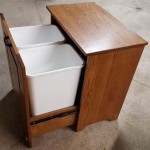16 Standard Cabinet Door Sizes References List In Order
Cabinet doors play a pivotal role in the functionality and aesthetics of any kitchen, bathroom, or storage space. Understanding the standard sizes available is crucial for designing new cabinetry, replacing existing doors, or embarking on a remodeling project. This article provides a comprehensive reference list of 16 standard cabinet door sizes, presented in an organized and easily digestible format, along with contextual information to aid in informed decision-making.
The dimensions of cabinet doors are generally expressed in inches, typically indicating width first, followed by height. These dimensions are critical for ensuring a proper fit within the cabinet frame and achieving the desired appearance. Deviating from standard sizes can lead to increased costs, longer lead times, and potential compatibility issues.
Key Point 1: Understanding Base, Wall, and Tall Cabinet Door Sizes
Cabinet doors are categorized based on the type of cabinet they are designed for: base cabinets, wall cabinets, and tall cabinets. Each category has its own set of standard sizes, reflecting the typical dimensions and functions of the corresponding cabinets. Understanding these categories is fundamental to selecting the appropriate door size for any project.
Base Cabinet Doors: Base cabinets are the lower cabinets that sit directly on the floor. They are used for storing a variety of items, including cookware, dishes, and cleaning supplies. Standard base cabinet door sizes generally range in height from 24 inches to 36 inches and in width from 9 inches to 36 inches, depending on the cabinet's overall dimensions and design.
Wall Cabinet Doors: Wall cabinets are mounted on the wall and are used for storing items such as dishes, glasses, and pantry staples. Wall cabinet door heights typically range from 12 inches to 42 inches, while widths can vary from 9 inches to 36 inches. The height of wall cabinet doors is often determined by the desired vertical spacing between the countertop and the bottom of the cabinet, as well as the overall ceiling height.
Tall Cabinet Doors: Tall cabinets, also known as pantry cabinets or utility cabinets, provide floor-to-ceiling storage. They are ideal for storing large items such as brooms, mops, and boxes. Tall cabinet door heights can range from 84 inches to 96 inches, with widths typically ranging from 12 inches to 36 inches. These dimensions provide ample access to the extensive storage space within these cabinets.
Key Point 2: Standard Cabinet Door Sizes Reference List (In Order)
The following list presents 16 standard cabinet door sizes, organized in ascending order of width and height. This organized approach simplifies the identification of the most suitable door size for a specific application. These sizes are commonly available from cabinet manufacturers and retailers.
It is crucial to confirm the exact dimensions with the specific manufacturer or retailer, as slight variations may exist.
- 9" x 12": Frequently used for small wall cabinets or narrow accent cabinets.
- 9" x 24": Suitable for narrow base cabinets, often used for spice racks or pull-out storage.
- 12" x 12": Used in smaller wall cabinets, sometimes above appliances.
- 12" x 24": A common size for base cabinet doors in smaller kitchens or bathrooms.
- 12" x 30": A standard size for wall cabinet doors, offering a balance of height and width.
- 15" x 24": Often used for wider base cabinets, providing more storage space.
- 15" x 30": A popular size for wall cabinets over countertops, accommodating standard dishware.
- 18" x 24": Suitable for larger base cabinets, offering ample storage capacity.
- 18" x 30": A common size for wall cabinets, providing a good balance of storage and visual appeal.
- 24" x 24": Typically used for wider base cabinets or specialty cabinets.
- 24" x 30": A larger size for wall cabinets, often used above refrigerators or ovens.
- 30" x 12": Wider, shorter wall cabinet door, often over a refrigerator.
- 30" x 24": A wide base cabinet door, suitable for under-sink cabinets or corner cabinets.
- 30" x 30": A large wall cabinet door, often used for displaying decorative items.
- 36" x 24": A very wide base cabinet door, typically used for corner cabinets or pantry pull-outs.
- 36" x 30": A wide wall cabinet door used for large storage needs.
This list encompasses a wide range of commonly available sizes, catering to various cabinet configurations and storage requirements. Choosing the correct size is essential for ensuring a seamless installation and optimal functionality.
Key Point 3: Factors to Consider When Selecting Cabinet Door Sizes
Selecting the appropriate cabinet door size involves considering several factors beyond the standard dimensions. These factors include the cabinet's overall size, the desired aesthetic, the intended use of the cabinet, and the presence of any obstructions or limitations. A comprehensive assessment of these factors will ensure the selection of the most suitable door size for any given application.
Cabinet Dimensions: The dimensions of the cabinet determine the maximum size of the door that can be installed. It is essential to accurately measure the cabinet opening and account for any necessary clearances for hinges and other hardware. The door size should be slightly smaller than the cabinet opening to allow for smooth operation and prevent binding.
Aesthetic Preferences: The size and style of the cabinet door can significantly impact the overall aesthetic of the space. Larger doors can create a more modern and minimalist look, while smaller doors can create a more traditional and intricate design. Consider the desired aesthetic and choose door sizes that complement the overall design scheme.
Intended Use: The intended use of the cabinet should also influence the choice of door size. For cabinets used to store heavy items, larger doors may be preferable to provide easier access and greater stability. For cabinets used to store smaller items, smaller doors may be more appropriate to prevent clutter and maximize storage efficiency.
Obstructions and Limitations: Any obstructions or limitations, such as pipes, electrical outlets, or appliances, should be taken into account when selecting cabinet door sizes. Ensure that the chosen door size will not interfere with any existing fixtures or equipment. In some cases, it may be necessary to modify the cabinet or choose a non-standard door size to accommodate these limitations.
In addition to these factors, consider the type of hinges and hardware to be used. Different types of hinges may require different clearances, which can affect the overall door size. It is also important to choose hardware that is compatible with the chosen door size and weight.
Ultimately, selecting the correct cabinet door size is a critical step in any cabinet project. By considering the standard sizes, the cabinet's dimensions, aesthetic preferences, intended use, and any obstructions or limitations, it is possible to choose the perfect door size for any application. Consulting with a cabinet professional or experienced contractor can also provide valuable insights and guidance in this process.
Proper planning and attention to detail will ensure that the chosen cabinet doors not only fit perfectly but also enhance the functionality and aesthetic appeal of the space. Utilizing this reference list and considering the factors outlined above will contribute to a successful and visually pleasing cabinet installation.

Barker Door Cabinet Doors And Drawer Boxes

Graphic Standards For Architectural Cabinetry Life Of An Architect

Graphic Standards For Architectural Cabinetry Life Of An Architect

Standard Kitchen Cabinet Sizes And Dimensions Guide

Standard Kitchen Cabinet Sizes And Dimensions Guide

Standard Kitchen Cabinet Sizes And Dimensions Guide

Graphic Standards For Architectural Cabinetry Life Of An Architect

Graphic Standards For Architectural Cabinetry Life Of An Architect

Hospitality Branded Technical Datasheets Häfele

What S For Dinner Horizontal Wall Art Print Red
Related Posts


